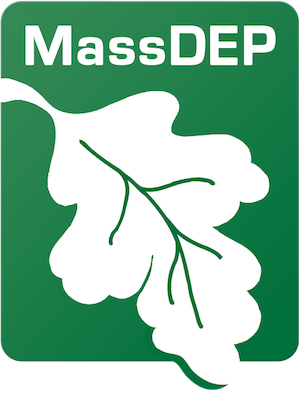- Massachusetts Department of Environmental Protection
Media Contact
Edmund Coletta, MassDEP – Director of Public Affairs
BOSTON — Public Meeting Set for Nov. 8 at New Bedford Dept. of Public Infrastructure Office
The Massachusetts Department of Environmental Protection (MassDEP) will hold a public meeting on Wednesday, November 8, 2023, to seek comments on a draft plan to reduce nitrogen in the coastal waters of the New Bedford Inner Harbor Estuarine System. The meeting begins at 2 p.m. in the City of New Bedford – Department of Public Infrastructure, located at 1105 Shawmut Ave.
This is a hybrid meeting with the option to participate via Zoom.To participate via Zoom, you must register in advance of the meeting. Click here to register. After registering, you will receive a confirmation email containing information about joining the meeting.
The restoration plan for the estuarine system, developed by MassDEP and the University of Massachusetts/Dartmouth School for Marine Science and Technology, is proposed as part of a comprehensive, collaborative project intended to improve estuarine water quality in 70 embayments along the southeastern Massachusetts coastline.
The New Bedford Inner Harbor Estuarine System is currently impaired because of excess nutrient concentrations, mainly nitrogen, which can lead to:
Loss of eelgrass beds, which are critical habitats for fish and macro-invertebrates such as snails, worms and nymphs;
- Undesirable increases in macro-algae, periodic algae blooms;
- Periodic extreme decreases in dissolved oxygen concentrations that threaten aquatic life; and
- Reductions in the diversity of bottom-dwelling animal communities.
The waterbodies in the New Bedford Inner Harbor Estuarine System are listed on the 2022 Massachusetts Integrated List of Waters for nutrient-related impairments, including: low dissolved oxygen, total nitrogen, and nutrient/eutrophication biological indicators.
Steady population growth and increased land use development, particularly during the last several decades in southeastern Massachusetts, has created an overabundance of nitrogen in Buzzards Bay harbors, bays, and estuaries. The primary controllable nitrogen sources are wastewater treatment facility discharge, septic system wastewater, lawn fertilizer leachate, combined sewer overflows, stormwater runoff, and farm animals. Atmospheric deposition also contributes varying quantities of nitrogen to aquatic systems.
At the public meeting, MassDEP staff will present a draft Total Maximum Daily Load (TMDL) for limiting nitrogen to the amounts that the waterbodies can absorb without violating established criteria in the Massachusetts Surface Water Quality Standards and impairing uses such as fishing and recreational activities. The plan calls for reducing watershed sources of nitrogen by 49.6 percent. Most of the reductions will be from better wastewater treatment, but nitrogen from stormwater and fertilizer use should also be controlled wherever possible.
A major component of this effort was three years of chemical, physical, and biological studies within the New Bedford Inner Harbor Estuarine System. A dynamic water quality model was also used to determine the present sources of nitrogen and loading rates, the nitrogen concentrations that will result in the restoration and protection of the embayment, and the target nitrogen loading rates that will achieve those protective concentrations. The watershed modeling and TMDL analysis will serve as a planning tool for communities to implement new comprehensive wastewater management strategies to improve estuarine water quality.
A copy of this Draft TMDL is available on MassDEP’s website.
The Massachusetts Estuaries Project Final Technical Report for New Bedford Inner Harbor Estuarine System on which the TMDLs were based, is available.
The public comment period ends at 5 p.m., December 8, 2023. Written comments can be submitted to: Holly Brown, Massachusetts Department of Environmental Protection, Watershed Planning Program, 8 New Bond Street, Worcester, MA 01606. Electronic format comments should be sent to: dep.wpp@mass.gov, and include ‘NBIH TMDL (CN 544.0) comments’ in the subject line.
A further explanation of the Massachusetts Estuaries Project can be accessed on the MassDEP website.
###
